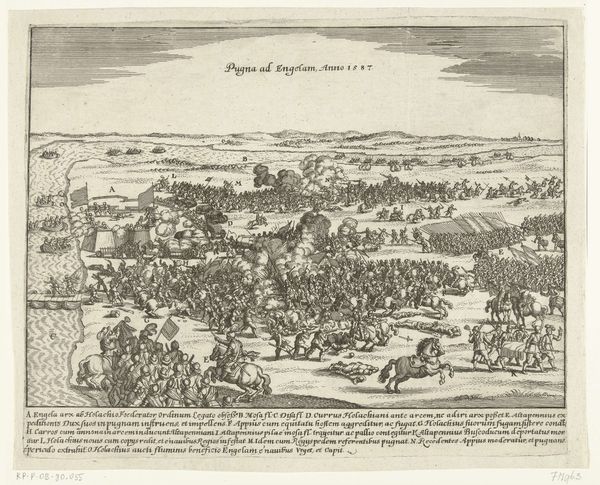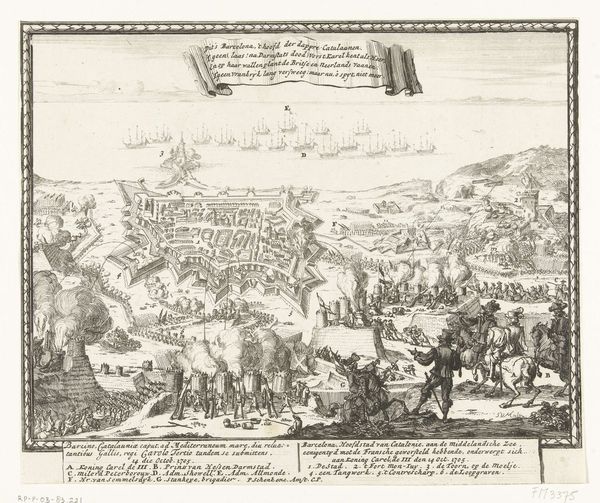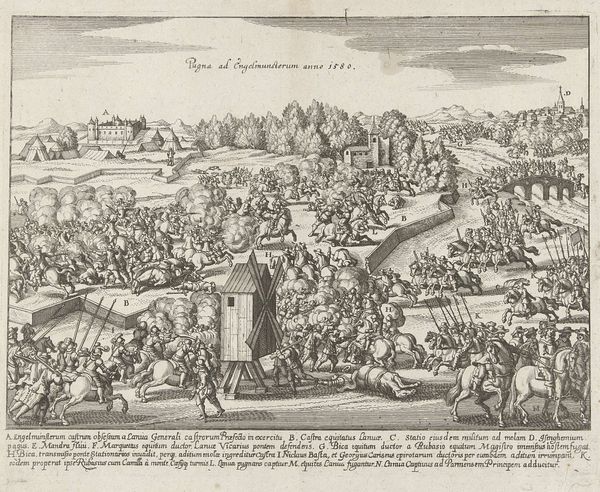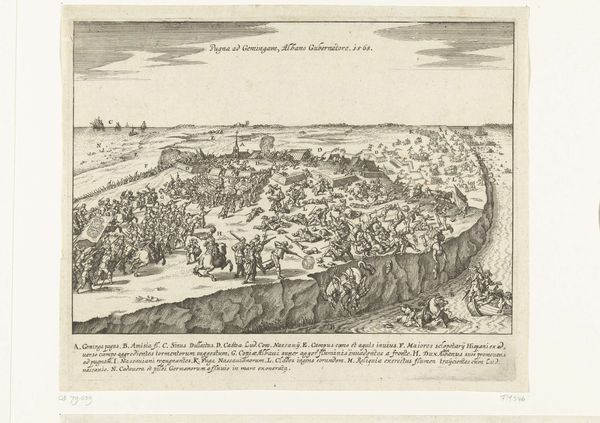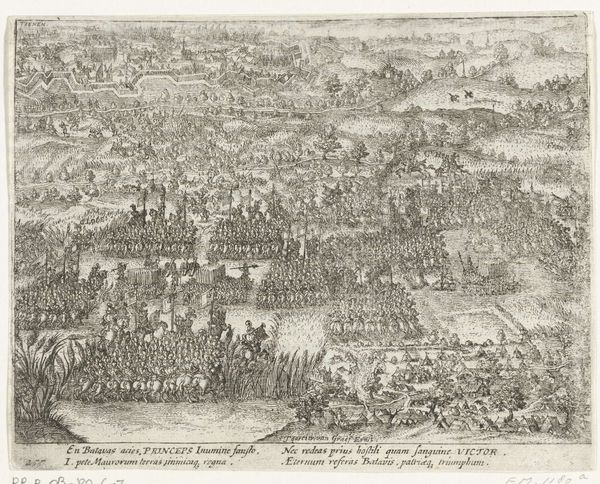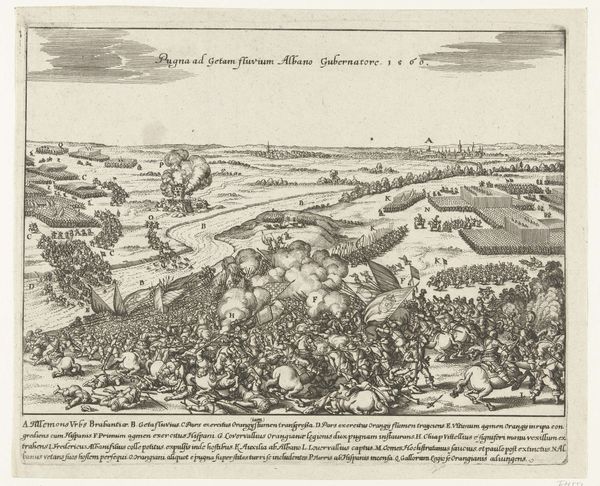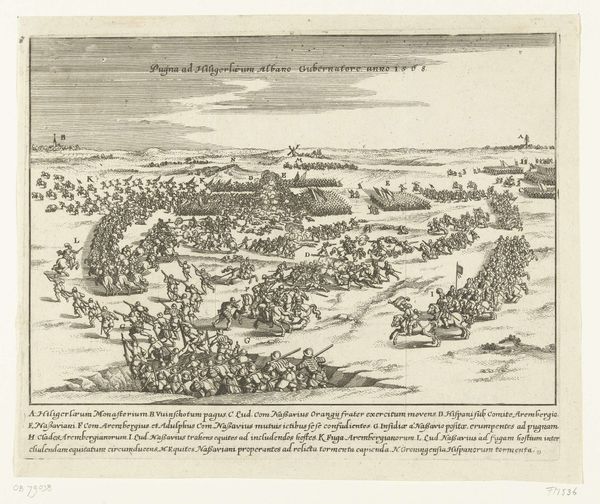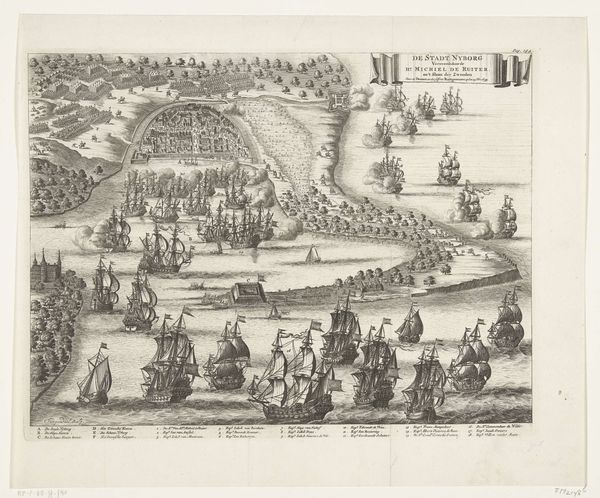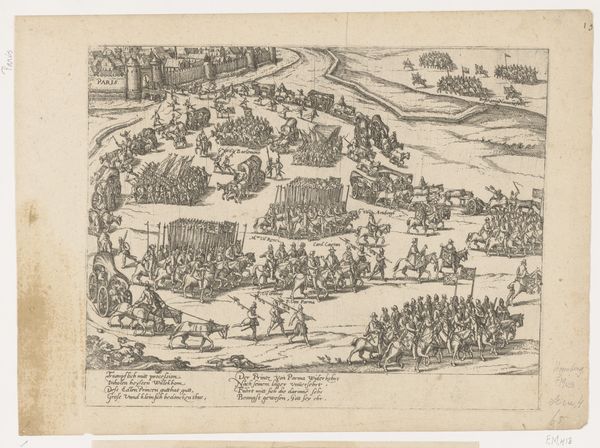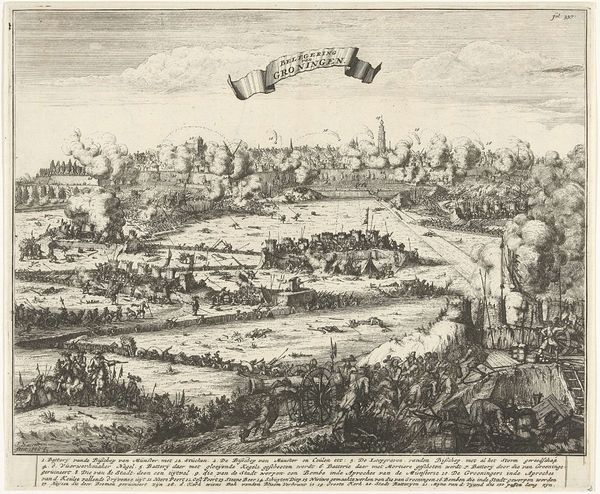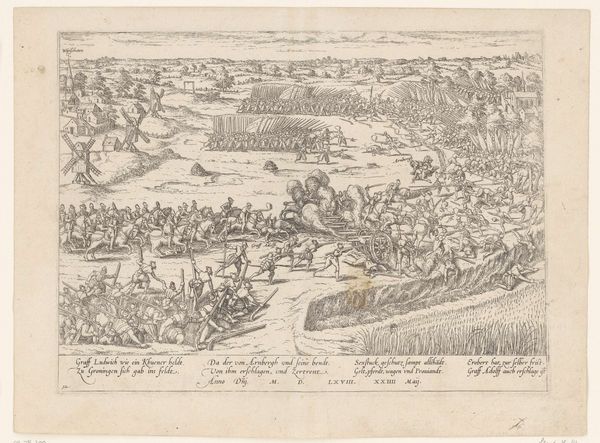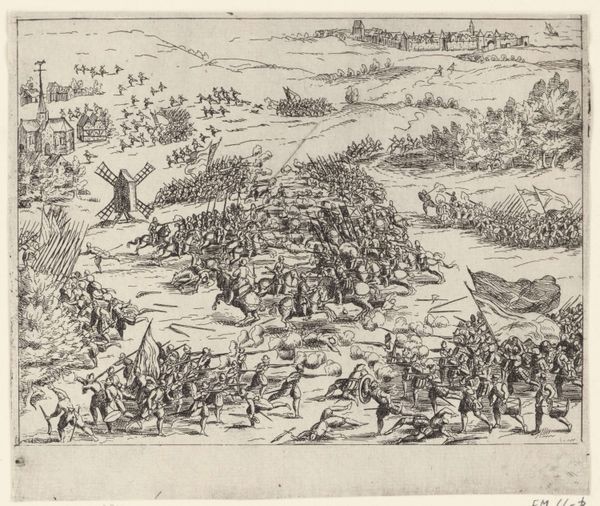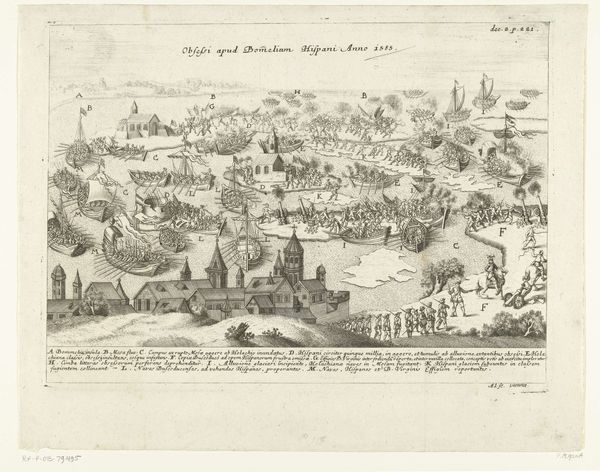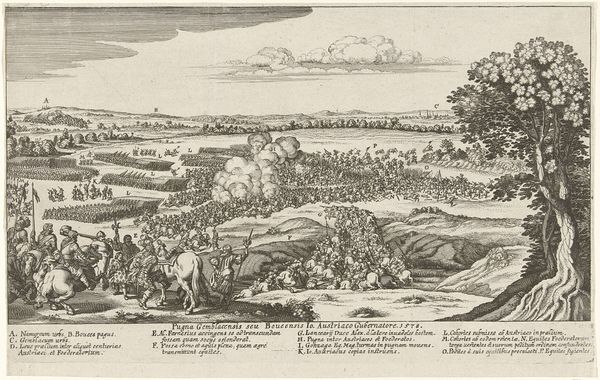
Verovering van de stad Oppenheim door de Zweedse legers op 7 september 1631 1631
0:00
0:00
wenceslaushollar
Rijksmuseum
print, etching, engraving
#
baroque
# print
#
pen sketch
#
etching
#
pencil sketch
#
old engraving style
#
landscape
#
pen-ink sketch
#
pen work
#
cityscape
#
history-painting
#
engraving
Dimensions: height 205 mm, width 325 mm
Copyright: Rijks Museum: Open Domain
Curator: This print by Wenceslaus Hollar, dating to 1631, depicts "The Conquest of the City of Oppenheim by the Swedish Armies on September 7, 1631". It is currently housed in the Rijksmuseum. Editor: It’s… overwhelming, isn't it? So much detail crammed into one image. You have a clear sense of a vast landscape with so many figures represented, but somehow everything seems ordered and legible. Curator: Legibility was key, wasn't it? Hollar was documenting a significant moment in the Thirty Years' War. Consider the function of prints in this era: circulating news and shaping public opinion. It is more than just aesthetics, its about the message. Editor: And the incredible labour that went into this etching! Think about the number of individual lines, each carefully considered and cut into the plate. The materials speak volumes about patience and skill. How long would this take? I can hardly believe someone made it. Curator: Quite. Prints like this offered a readily reproducible visual record. Oppenheim’s capture was a propaganda victory for the Swedish forces, bolstering their image across Europe through affordable dissemination. It is not just a capture, but the shaping of narrative. Editor: I notice that while the armies dominate the foreground, Hollar has given just as much, if not more, attention to the layout of the town and surrounding geography. He's not just showing military might; he’s providing a comprehensive view of place, almost like a cartographer. This adds weight to the violence somehow. Curator: Indeed. He masterfully combines panoramic landscape with narrative detail. He presents both a portrait of power and a snapshot of a society engulfed in conflict. These were violent times for the German states, especially during the Thirty Years War. It offers an unflinching, highly detailed insight into its brutal processes. Editor: For me, reflecting on all the hands involved—from the artist himself to the printers churning out copies—this print becomes a powerful meditation on labor, war, and the stories we choose to tell ourselves. All of this violence reproduced by and through intensive labor! Curator: Precisely. Hollar's print serves as a stark reminder of the role of art in constructing, and disseminating political narratives throughout Europe. It provides key insight into not just military history but the history of power.
Comments
No comments
Be the first to comment and join the conversation on the ultimate creative platform.
